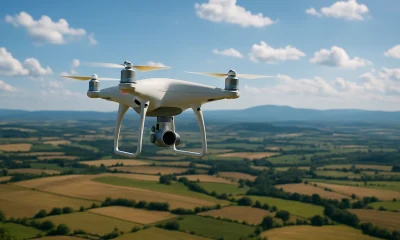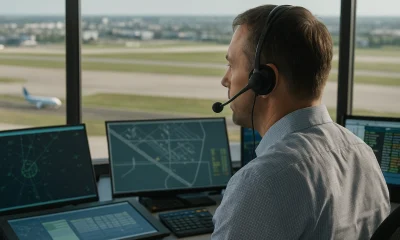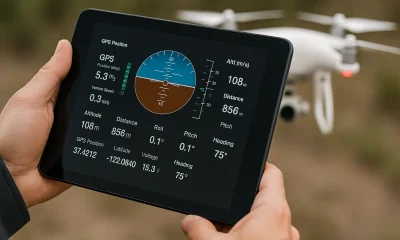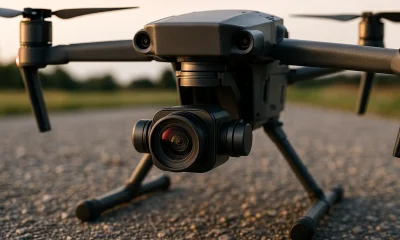- Acronym Guide
- AAM
- ABS
- AC
- ACAS
- ADS-B
- AEHF
- AFAC
- AGL
- AI
- AIM
- ALPA
- ALS
- AM
- AMA
- ANSP
- AOI
- APPI
- AUV
- AUVSI
- ARPAS-UK
- ASTM
- ATC
- ATO
- BLOS
- BVLOS
- CAA
- CAAC
- CAB
- CAP
- CASA
- CATT
- CBO
- CBR
- CBRN
- CDMA
- CDR
- CFI
- CFR
- CIR
- COA
- COMINT
- CORS
- COTP
- COTR
- CPTED
- CV
- C2
- DAA
- DAS
- DEM
- DFI
- DFS
- DGCA
- DHS
- DOD
- DPA
- DPEs
- DRG
- DRO
- DSM
- DSMX
- DSP
- DSSS
- DTM
- EASA
- EFT
- EO
- EOD
- EO/IR
- ELINT
- EMI
- ESC
- EVLOS
- eVTOLs
- FAA
- FCC
- FCS
- FHSS
- FICCI
- FLIR
- FOB
- FOV
- FPS
- FPV
- GBDAA
- GCP
- GCS
- GDPR
- GML
- GNSS
- GPS
- GSD
- GVC
- HDR
- HOGE
- IACRA
- ICAO
- ICS
- IMU
- INS
- IR
- ISA
- ISR
- ITU
- JARUS
- LAAMS
- LAANC
- LAATM
- LAI
- LAS
- LBA
- LIDAR
- LOS
- LSALT
- MAC
- MAVLink
- MLIT
- MMS
- MSL
- MTOM
- NDAA
- NCSL
- NFZ
- NIST
- NMEA
- NOTAM
- NPA
- NPRM
- NTIA
- OBIA
- OEM
- OFDM
- OGI
- OOP
- PAS
- PASM
- PAV
- PCV
- PdM
- PEC
- PIC
- PID
- PIPL
- PLD
- PM
- PN
- PPK
- PPS
- PSM
- PTZ
- PWM
- UAM
- UAOP
- UAS
- UASTM
- UAV
- UCAVs
- UHD
- UHF
- USV
- UTM
- RAIM
- RCC
- RCS
- RFI
- ReOC
- RePL
- RMS
- ROI
- RPAS
- RPC
- RTH
- RTN
- RTK
- SaR
- SAR
- SARP
- SBAS
- S.Bus
- SBIR
- SEDENA
- SfM
- SFOC
- SIGINT
- SLAM
- SMS
- SOP
- SORA
- STANAG
- STTR
- STK
- sUAS
- TCAS
- TCCA
- TFR
- TIN
- TLM
- TOF
- TP
- TPS
- TSA
- VHF
- VLOS
- VTOL
Drone Acronyms
What is AC (Advisory Circular) & How Does it Work?
Published
2 months agoon
By
Jacob StonerTable Of Contents

Definition
AC, or Advisory Circular, is an official document issued by the Federal Aviation Administration (FAA) to provide guidance, clarification, and best practices related to aviation regulations—including those applicable to drone (UAS) operations. Although not legally binding, ACs are used to explain how to comply with FAA rules, interpret regulatory language, and offer detailed procedures that pilots and operators can follow to meet safety standards.
Usage
Drone pilots reference ACs when preparing for certification exams, seeking operational clarity, or planning complex missions. Advisory Circulars are especially useful in areas such as waivers, night operations, Remote ID, airspace authorization, and operations over people (OOP). They serve as the FAA’s official recommendation on how to meet specific parts of 14 CFR Part 107.
Relevance to the Industry
ACs play a crucial role in educating drone operators and guiding compliance across the commercial and recreational drone sectors. As regulations evolve, the FAA regularly updates ACs to reflect new technologies, enforcement priorities, and safety considerations. Staying informed on relevant ACs helps drone pilots avoid violations, streamline waiver approvals, and align with national airspace integration policies.
How Does AC (Advisory Circular) Work?
Advisory Circulars (ACs) work as interpretive tools that help drone operators understand and apply FAA regulations in real-world operations. While they do not create new rules, they serve as the FAA’s official explanation of how to comply with existing laws—especially for commercial drone use under Part 107. Here’s how ACs function within drone operations:
Created to Clarify Regulations
When new rules or amendments are published in the Federal Aviation Regulations (FARs), the FAA issues an accompanying AC to explain what those rules mean in practical terms. For example, AC 107-2 explains Part 107 regulations in a more accessible format for drone pilots, including step-by-step guidance and acceptable methods of compliance.
Used as a Guide for Compliance
Drone operators use ACs to understand what the FAA expects for specific operations like:
Flying at night or over people
Submitting a waiver or authorization request
Conducting inspections near infrastructure or in controlled airspace
Meeting Remote ID requirements
ACs outline recommended procedures, safety protocols, and documentation practices that align with FAA policies.
Support for Waivers and Applications
When applying for waivers (e.g., for BVLOS or night operations), referencing relevant ACs strengthens the application. By following the methods described in an AC, the applicant demonstrates that their proposal already meets or exceeds FAA safety expectations, improving the chance of approval.
Updated as Regulations Evolve
As drone laws change or new technologies emerge, the FAA revises or issues new ACs. Staying current with these updates ensures that drone operators remain compliant, even as the industry shifts toward more advanced or integrated operations in national airspace.
Educational Tool for Training and Certification
ACs are often part of formal training curricula and study guides for commercial certification. They are referenced in FAA knowledge tests and used by instructors, flight reviewers, and public safety trainers to standardize best practices across the drone industry.
By interpreting the legal framework in plain language and offering actionable steps, Advisory Circulars serve as a bridge between regulation and everyday drone operations—empowering pilots to fly safely, confidently, and within the bounds of FAA oversight.
Example in Use
“Before applying for a Part 107 waiver to fly at night, the drone operator reviewed FAA Advisory Circular AC 107-2 to ensure the mission plan met all safety criteria.”
Frequently Asked Questions about AC (Advisory Circular)
Are Advisory Circulars legally enforceable?
Answer:
No. ACs are not regulatory by themselves—they are guidance documents that explain how to comply with existing regulations. However, following the procedures outlined in an AC is one of the most effective ways to demonstrate compliance during inspections or waiver applications.Where can drone pilots find relevant ACs?
Answer:
ACs are publicly available on the FAA’s official website. Key ACs related to drones include:
AC 107-2: Guidance for commercial drone operations under Part 107
AC 91-57C: For recreational and community-based operations
ACs related to Remote ID and airspace waivers
Why are ACs important to commercial drone operators?
Answer:
They clarify ambiguous rules and help operators implement safe procedures.
They improve the likelihood of FAA waiver approvals.
They reflect up-to-date expectations for drone professionalism and airspace integration
For examples of these acronyms visit our Industries page.
As the CEO of Flyeye.io, Jacob Stoner spearheads the company's operations with his extensive expertise in the drone industry. He is a licensed commercial drone operator in Canada, where he frequently conducts drone inspections. Jacob is a highly respected figure within his local drone community, where he indulges his passion for videography during his leisure time. Above all, Jacob's keen interest lies in the potential societal impact of drone technology advancements.
Pros
Cons
You may like


What is BLOS (Beyond Line of Sight) & How Does it Work?


What is ATO (Authority to Operate) & How Does it Work?


What is ALPA (Air Line Pilots Association) & How Does it Work?


What is AEHF (Advanced Extremely High Frequency)?


What is TLM (Telemetry) & How Does it Work?


What is PTZ (Pan-Tilt-Zoom) & How Does it Work?